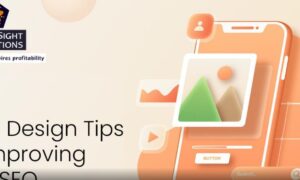When it comes to user interface (UI) and user experience (UX) design, the question frequently arises as to which is more important: user-centeredness or business-centeredness. Based on our experience working with a TOP UI/UX design company in San Francisco, below we try to answer this question by looking at business priorities in relation to consumers.
Comparing Priorities
| Criteria | User-Centered Approach | Business-Centered Approach |
| 1. User Satisfaction | High Priority: Prioritizes meeting consumer needs, preferences, and delivering delightful experiences to foster loyalty, referrals, and positive reviews. | Moderate Priority: Strives to balance customer satisfaction with achieving business objectives. Recognizes that satisfied users are more likely to convert and become loyal customers. |
| 2. Conversion and Revenue | Moderate Priority: Focuses on creating seamless interactions to drive key conversions such as sign-ups and purchases. | High Priority: Aims to maximize revenue through strategies like upselling, cross-selling, and targeted advertising while ensuring a satisfactory user experience. |
| 3. Long-Term Success | High Priority: Emphasizes building enduring relationships with users for sustained success and growth. | High Priority: Focuses on achieving business growth, profitability, and market leadership. Recognizes the importance of long-term success and continuous improvement. |
In plain sight: Every click on the internet holds the power to shape the destiny of a product or service. That’s why user experience (UX) plays a pivotal role for search engines. In depth: Search engine algorithms tirelessly evolve, yet their core purpose remains unchanged: to benefit the customer. Whether it’s enhancing usefulness, ensuring comfort, or fostering engagement, these changes are all about the end user. But here’s the catch: If any of these aspects fall short of expectations, over 90% of visitors will abandon the site, never to return. Behind the cold statistics lie real people — individuals striving for usability, clarity, and efficiency. UpSellit explores user behavior, the underlying causes of site abandonment, and strategies to keep visitors engaged. Let’s get into the details.
User-centered design: The path to success
What UX factors make users stay or leave? A happy client is a prerequisite for a profitable business. This is the formula for long-term success for any company, be it commercial, entertainment or educational (the last two mean non-profit). The constants of this formula make up a deep understanding of users’ motivations, habits and goals, which allows you to create products they will use and love. When interacting with a product or service, the consumer doesn’t have to understand, it’s complex, he has to feel that his needs matter. His pains, sets of mind and dreams should all be considered to create products that stand the test of time.
The stumbling block between clients and San Francisco UI/UX design studios is the former’s business orientation. Their approach is explained by achieving marketing goals, including increasing sales, customer retention, and optimizing workflows — but there’s a flip side. The experts at Dworkz share the prioritization of customer needs over business needs and why it matters.
Understanding users’ needs and habits
Creating a product that resonates with users requires meticulous research, empathy, and ongoing feedback. Through the analysis of user data, conducting interviews, and monitoring interactions, we glean insights that guide our design choices. Which features are users longing for? How do they interact with the interface? What challenges do they face?
Simplicity and intuitiveness
Complexity breeds confusion. Users appreciate simple, intuitive interfaces that require minimal effort to master. To achieve the goal, strive for clarity in design elements, minimize cognitive load, and ensure consistency throughout the user journey. When users can effortlessly achieve their goals, they are more likely to stay engaged. To make UI/UX simple and intuitive, it’s important to follow 5 basic principles:
- UI Clarity: The interface should be clear and obvious so that users can easily understand how to use it.
- UX consistency: UI design elements and behavior should be consistent across all pages and functions.
- Minimalism: Avoid unnecessary information and elements that can distract or confuse the consumer. Ideally, the targeted action should take the client a maximum of three clicks.
- Feedback: The system should provide clear feedback in response to user actions: FAQ section, chatbot, contacts.
- Inclusivity: When designing, it’s essential to consider the needs of customers with disabilities. The Web Content Accessibility Guidelines (WCAG) offer broadly defined guidelines for creating accessible web content. These guidelines serve as a benchmark for compliance with accessibility laws, which cover a wide range of aspects including visual, auditory, cognitive and motor accessibility.
Note: Just as in the dilemma between user experience and business goals where they must find common ground, UI is part of the broader UX. So, in addition to UI, UX design includes aspects that shape the customer experience, such as loading speed, ease of navigation, and overall satisfaction with the product. Dependencies: While a good UI can significantly improve UX, even an average UI can achieve a great user experience.
Testing with real users
The best way to validate your design choices is through real-world testing. Involve real users as early and as often as possible. This helps to identify weaknesses even at the design stage. Subject the product to usability testing, including A/B testing and user feedback sessions. The blind spots thus identified indicate areas of the product that need strengthening. Iterative design based on user feedback leads to product improvements.
Business-oriented: Way to meet people
Profit is not just a number on a report; it reflects a company’s success. The pursuit of profit maximization does not exclude attention to the customer experience; in fact, the two should go hand in hand. Consumer interests are the foundation upon which a business’s sustainable future is built. When developing products and services, these interests must be at the center of attention to ensure not only current, but also long-term financial sustainability. The following list outlines essential strategies to harmonize profit-driven goals with user-centric design principles:
- Simplify the buying process: Minimize the number of steps before making a purchase.
- Trust: Creating a design that inspires trust and confidence in users.
- Conversion: Optimize buttons and calls to action to increase sales.
- Responsiveness: Adaptive design to work on all devices, expanding the market.
- Behavior analytics: Using data to improve user experience and increase sales.
- Feedback: Implementing a feedback system to gather consumer opinions and incorporate them into the design.
- Adaptability: Design that works on any device, increasing audience reach.
- Savings: Minimize support costs through intuitive design.
Bottom line
The debate about the benefits of user-centered vs. business-centeredness in UI/UX design reveals where the interests of both users and businesses meet. Dworkz’s experience, a frontrunner in San Francisco’s UI/UX design scene, makes one thing clear: compromising at the client’s benefit is off the table. This is the kind of strategy builds customer loyalty and contributes to long-term business success. Each design choice must consider the needs of both stakeholders. Designers rely on flexibility, creativity, and strategic thinking, while businesses demand high-quality products and services — all of this aims to ensure that users experience satisfaction seamlessly, without even noticing the efforts concealed deep within their device interfaces.



































